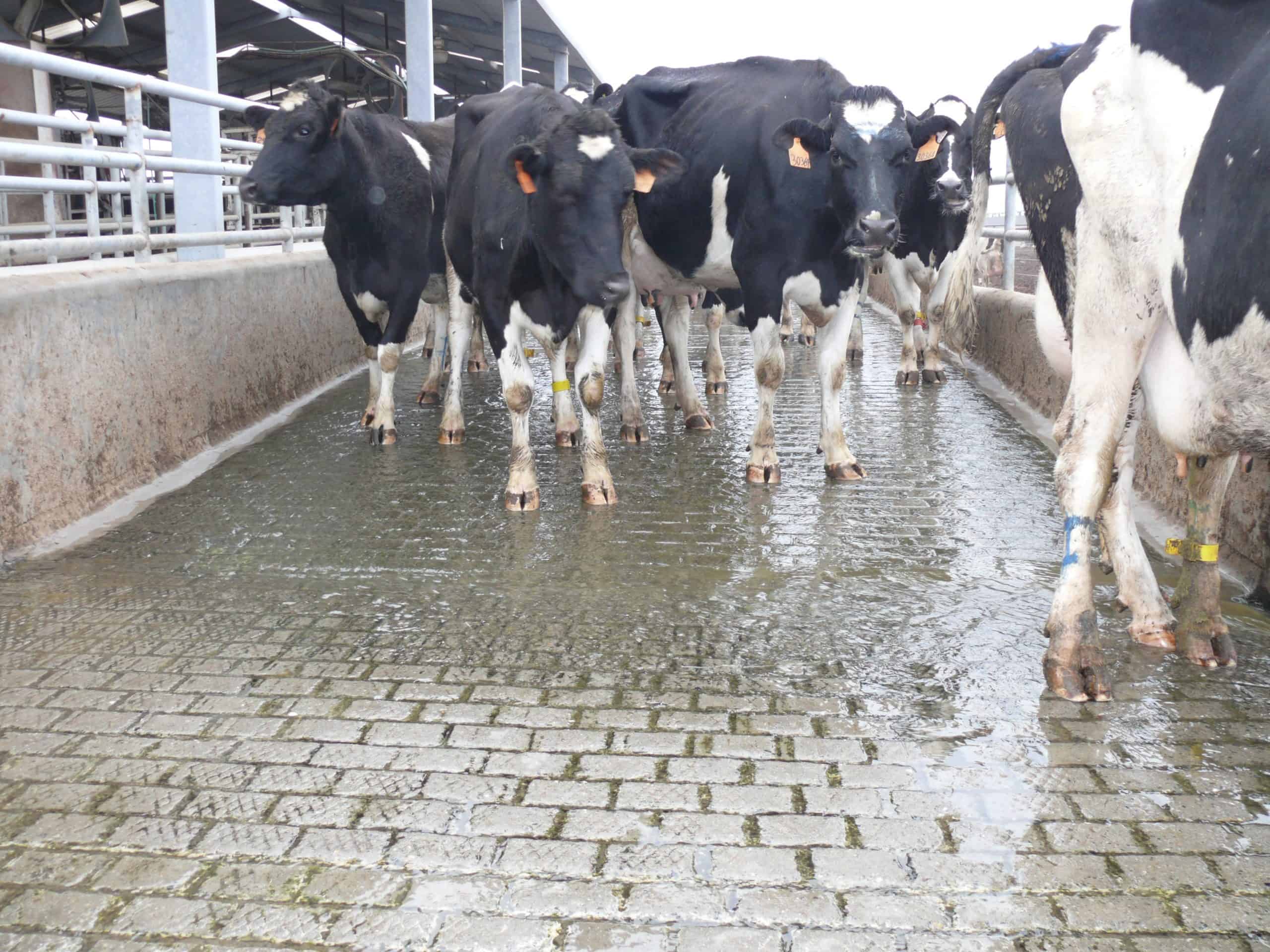
When it comes to hoof health, there are many factors that go into making sure your cows have healthy hooves. Many of these get overlooked, as they may seem trivial, but are all important to keep hooves healthy.
If cows are comfortable, they will lie down and get off their feet. If they are uncomfortable, they will remain on their feet, which puts additional stress on the hoof. Having comfortable, properly sized stalls is very important. If the stall is too small or uncomfortable, the cow will choose not to lie down and relax. Additionally, airflow is important for the purpose of providing ventilation and fresh air. Proper airflow will control moisture produced by the cows as well as remove odors and gases from the barn.
Improper animal handling and an intense barn environment can elevate stress levels. Ensure farm employees are properly trained on cow handling and that the barn environment is properly maintained. When employees are properly trained, they will know how to handle cows to keep them calm and avoid sudden movements which can cause hoof damage. Also, flooring impacts the stress of the cows. An uneven or broken surface, or floors that are too slippery or too coarse, can cause cows to be off-balance while walking, which leads to additional stress.
Having a foot care routine is important. If you run a footbath, you need to make sure you are using it frequently. If you do not have a footbath, it is recommended to use a topical spray or foam with regular use. Consistently using a footbath or topical applicator will help reduce the chance for a digital dermatitis breakout, especially if you are using a proper additive. Using hand soap or rock salt can help clean manure off a cow’s leg, but it does not aid in reducing digital dermatitis-causing organisms
Routine hoof trimming is important. This allows a hoof trimmer to inspect hooves for any issues and helps rebalance hooves and prevent excessive wear. If any issues are discovered during the inspection, they can be treated right away.
It is important to recognize when lameness is present, identify the root cause and treat it. Research shows lameness reduces productivity at peak yield by up to 20%, at an estimated cost of $350 per case. There is money to be made by tending to lameness issues when they first emerge.